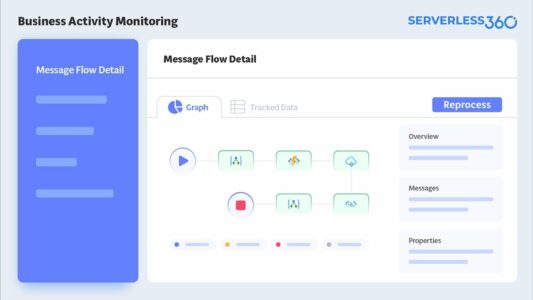Any business creating a contemporary cloud-native application will rely on more than one service to satisfy client needs. For example, creating a solution on the Microsoft Azure cloud is more likely to integrate many Azure services, making it challenging to identify and fix performance issues. Distributed tracing tools are a useful option in such circumstances! Using this technique, you may trace and visualize user requests or messages as they pass through your distributed Azure services.
Why Is It Beneficial To Have A Distributed Tracing Solution?
Get Centralized View
Distributed tracing shows how the services communicate and tracks the message request to provide a more comprehensive picture of your distributed Azure services. Each team can quickly identify errors and comprehend how an application is created.
Fix Bottlenecks Faster
Distributed solutions can be useful because they provide end-to-end visibility, allowing you to identify and fix critical issues in minutes. When multiple Azure services are incorporated into your application, it becomes nearly impossible to identify the service that is the root cause of an issue.
Focus On What’s More Important
Most of the time, businesses create unique tracing systems, which may be laborious and time-consuming. To save time, let your developers innovate and focus on what matters by choosing a pre-made solution that can handle monitoring and tracking. However, picking a distributed tracing tool that meets your company’s needs is crucial. The best tools for achieving end-to-end tracing for your sophisticated Azure systems are listed below.
The Best Distributed Tracing Tools To Use
We’ve compiled a list of Distributed Tracing Tools to help you find the right one.
1. Serverless360 BAM
With Serverless360’s Business Activity Monitoring, your operations team will be given access to more advanced tracing tools for your hybrid and Azure systems. It gives business users a sophisticated tool to track, visualize, and identify message flow issues across dispersed Azure services. Designing your message transactions in Serverless360 and then integrating message tracking into your business process is a very straightforward setup procedure.
Features
- Visualize and compare the messages sent and received by the various Azure services in your intricate integrations.
- Tracking each message transaction in your business solution can help you quickly determine the root cause and fix message transaction errors.
- A unique “Action required” page will be created for each unsuccessful transaction that needs quick attention.
- You can edit and reprocess the required value for a successful resubmission using the repair and resubmit capability.
- Business-critical data may be quickly retrieved from several message transactions using straightforward queries.
- Real-time dashboards give you a visual representation of the recorded data in charts and reports.
- When a threshold is crossed, you may quickly be informed via your selected notification channels by monitoring the transactions in many areas.
- Serverless360’s built-in governance and auditing capability improves security.
All monitored information and message specifics will be kept in Azure SQL Database and Blob Storage and may be retrieved whenever necessary.
2. Application Insights

Well, Application Performance Management (APM) and proactive monitoring for live web apps are two of Azure Monitors’ most well-liked features, including app insights. It is an effective tool that also aids in problem-solving and performance analysis of your web apps.
Features
- Receive real-time monitoring of the functionality and performance of your applications.
- Making it easier to diagnose performance problems, you can also delve into the specifics of a failed request and determine what generated the exception.
- Thanks to App Insights ‘ application Map feature, it is easier for you to visualize the connections between various Azure Services.
- You may log the observed data for particular services used in an Azure application by connecting App Insights with Log Analytics.
App Insights might be a good option when it comes to monitoring certain Azure services but not a complete application. It is impossible to trace the entire message flow through your distributed services. This led to the development of several third-party tools, whose features are listed below.
3. New Relic

Distributed tracing, one of the numerous cutting-edge features offered by New Relic, combines pertinent data from different technology stacks to show how your complete system works. Because it is a fully managed cloud-native application, you may scale up and down as needed without extra infrastructure support.
Features
- To reduce the workload on your distributed systems, see the tracing telemetry.
- New Relic supports two alternative tracing forms for old monolith systems and microservices-based apps: standard distributed and endless tracing.
- It enables telemetry tracing from any source, including open source tools and standards like OpenTelemetry, OpenCensus, and Istio.
- Get in-depth analytics and real-time notifications in Slack and other collaboration tools to help you quickly identify abnormalities.
4. Site 24×7
By tracking the message transactions made from one service to another, Site 24×7 can identify the root cause of an issue whenever it happens. Distributed tracing technology from Site 24×7 traces the whole flow of the message transaction across several services instead of looking at each service in turn while analyzing various services of an application. Overall, it gives you all the features you need to accomplish end-to-end visibility.
Features
- You may monitor code flows across application boundaries using its distributed tracing feature.
- The tool assists you in thoroughly examining traces to identify performance bottlenecks in your application or service.
- Find and gather logs from different services that impact your key performance indicators (KPIs).
- Set standards for your KPIs and decide what should be done if they are unmet.
5. App Dynamics
Application Performance Monitoring (APM) tool App Dynamics supports a variety of cloud suppliers. When it arrives at distributed tracing for microservice architectures, it provides a good variety of features that assist you in finding performance problems before they harm your business outcomes.
Features
- Get complete observability over your application’s dependencies, such as databases, message buses, and containers.
- Real-time insight into your web and mobile applications’ message flow
- Flow maps emphasize the message flow and display your application’s tiers, nodes, message queues, and databases. The color red, yellow, and green indicates the message flow’s state.
- Diagnose performance issues and determine their root causes quickly.
Also, Check:
The Bottom Line:
It’s more important to try them out and select the tools that best suit your logging and tracing needs because each distributed tracing tool on the above list will have advantages and disadvantages. However, given all of its end-to-end tracing features, Serverless360 BAM should be your top pick if you’re especially searching for distributed tracing tools with broad support for systems created using the Azure cloud.




